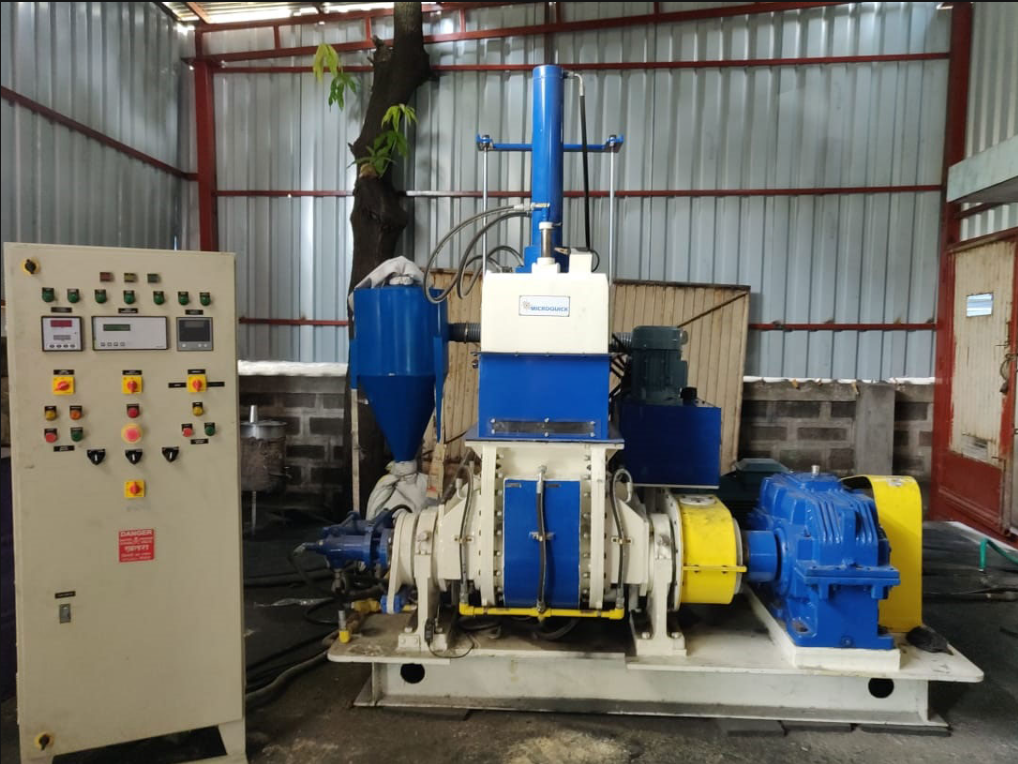Improving Rubber Compounding with Advanced Dispersion Kneaders
Importance of Rubber Compounding in Various Industries
Rubber compounding plays a crucial role in industries such as automotive, industrial applications, consumer products, healthcare, and electrical. High-quality rubber compounds are essential for manufacturing durable, reliable, and cost-effective products across these sectors.
Challenges Faced in Traditional Rubber Compounding Processes
Traditional rubber compounding processes face several challenges, including inconsistent quality, inefficiencies, and difficulty in achieving optimal dispersion of ingredients. These issues can lead to inferior products, increased production costs, and reduced competitiveness for manufacturers.
Introduction to Advanced Dispersion Kneaders as a Solution
Advanced dispersion kneaders offer a solution to these challenges by providing superior mixing, efficient operation, and consistent results. Incorporating this technology can significantly improve rubber compounding processes, leading to enhanced product quality and increased profitability for manufacturers.
Overview of Rubber Compounding Process
The rubber compounding process is a critical stage in the production of rubber-based products, from tires to medical devices. This process involves the careful selection and mixing of various ingredients to create a homogenous and high-quality compound. In this section, we will discuss the key components involved in rubber compounding, common challenges faced in the process, and the importance of quality and efficiency in rubber compounding.
Key Components Involved in Rubber Compounding
Rubber compounding requires a precise combination of ingredients, including the base polymer, fillers, plasticizers, curing agents, accelerators, and other additives. The base polymer provides the fundamental properties of the rubber compound, while the other ingredients serve to enhance or modify these properties according to the specific application requirements. The selection and proportion of these ingredients play a vital role in determining the final performance characteristics of the rubber product, such as tensile strength, elasticity, and resistance to wear and aging.
Common Challenges Faced in the Process
One of the main challenges in rubber compounding is achieving a consistent and thorough dispersion of the various ingredients throughout the polymer matrix. This is essential to ensure uniform properties in the final product, as well as efficient and reliable processing during subsequent manufacturing stages. Traditional rubber compounding methods, such as open mill mixing and internal mixers, can struggle to achieve the desired level of dispersion, often leading to batch-to-batch variations and diminished product performance.
Other challenges in rubber compounding include long processing times, high energy consumption, and the need for skilled labor to operate and maintain the machinery. These factors can contribute to increased production costs and reduced competitiveness for rubber product manufacturers.
Importance of Quality and Efficiency in Rubber Compounding
Attaining a high level of quality and efficiency in the rubber compounding process is crucial for the success of rubber product manufacturers. Consistent, high-quality compounds are essential for meeting stringent industry standards and customer expectations, while efficient processing can help to minimize production costs and enhance profitability. With the increasing demand for rubber products across various industries, it is more important than ever for manufacturers to invest in advanced technologies, such as dispersion kneaders, that can optimize the rubber compounding process and deliver superior results.
Introduction to Advanced Dispersion Kneaders
Advanced dispersion kneaders play a crucial role in improving the rubber compounding process. Their innovative technology offers numerous benefits over traditional methods. In this section, we will explore the technology behind dispersion kneaders, their key components and features, and the advantages of automation and continuous hydraulic compression.
Description of Dispersion Kneader Technology
Dispersion kneaders are designed to provide superior mixing and dispersion of rubber compounds while maintaining an energy-efficient operation. They incorporate advanced features like temperature control, pressure monitoring, and automatic feeding systems to ensure consistent and high-quality compounding. The technology behind dispersion kneaders allows for faster and more precise mixing compared to traditional methods, resulting in improved product quality and reduced production times.
Key Components and Features of Advanced Dispersion Kneaders
Advanced dispersion kneaders consist of several key components that work together to deliver exceptional performance. Some of these components include the mixing chamber, rotors, and hydraulic systems. The mixing chamber is wear-resistant and designed for optimal mixing efficiency. Rotors are engineered for superior dispersion and longevity, while the hydraulic systems enable precise control over the compounding process.
Additionally, advanced dispersion kneaders offer a range of features that enhance the rubber compounding process. These features include automated continuous hydraulic compression on ingredients, excellent dispersion of ingredients, and consistent quality compounding. The kneaders are also designed to produce hard batches and have wear-resistant mixing chambers and rotors. Innovative shaft seals with lubrication passages prevent ingredient leaks, and the machines have low energy consumption.
Automation and Continuous Hydraulic Compression in Dispersion Kneaders
Automation and continuous hydraulic compression are two critical aspects of advanced dispersion kneaders that contribute to their efficiency and effectiveness in rubber compounding. Automation enables precise control over the mixing process, ensuring consistent batch preparation and reducing human error. Continuous hydraulic compression applies constant pressure to the ingredients, resulting in improved dispersion and a faster compounding process.
In conclusion, advanced dispersion kneaders offer a range of benefits over traditional rubber compounding methods. Their innovative technology, key components, and features, along with automation and continuous hydraulic compression, result in improved product quality, increased efficiency, and reduced production times. Investing in advanced dispersion kneaders is essential for companies in the rubber industry that are looking to optimize their compounding processes.
Improving Rubber Compounding Process with Advanced Dispersion Kneaders
The rubber compounding process can be significantly improved with the use of advanced dispersion kneaders. These kneaders offer numerous advantages over traditional methods, ensuring higher quality and efficiency in rubber compounding. In this section, we will discuss the benefits of using dispersion kneaders in rubber compounding, the unique selling points of Microquick’s Hydraulic Dispersion Kneaders, and tips for optimizing the process using advanced kneaders.
Advantages of using dispersion kneaders in rubber compounding
Dispersion kneaders provide several key advantages in the rubber compounding process, such as:
- Improved dispersion of ingredients: Advanced kneaders ensure better mixing and distribution of all ingredients, resulting in a more consistent and higher quality product.
- Reduced batch preparation time: Dispersion kneaders are capable of preparing batches in a shorter time frame, increasing overall productivity and efficiency.
- Enhanced automation and continuous hydraulic compression: This feature ensures consistent pressure on the ingredients during the mixing process, leading to better control over the final product’s properties.
- Reduced energy consumption: Advanced kneaders are designed to consume less energy, making them more cost-effective and environmentally friendly.
Unique selling points of Microquick’s Hydraulic Dispersion Kneaders
Microquick Engineers’ Hydraulic Dispersion Kneaders stand out from the competition due to their:
- Excellent quality compounding: Microquick kneaders ensure consistent and high-quality rubber compounds by utilizing state-of-the-art technology and design.
- Faster production: The reduced batch preparation time allows for increased production rates, ensuring higher efficiency.
- Automated and consistent batch preparation: Advanced automation features in Microquick kneaders guarantee uniformity in the rubber compounds, reducing the chances of errors or inconsistencies.
- Value for investment: The combination of high-quality compounding, faster production, and reduced energy consumption makes Microquick’s kneaders a cost-effective choice for businesses.
- Operator-friendly design and compact size: The user-friendly design and compact size of Microquick kneaders make them easy to integrate into existing production lines.
Tips for optimizing the rubber compounding process with advanced dispersion kneaders
When using advanced dispersion kneaders in the rubber compounding process, consider the following tips for optimization:
- Choose the right kneader model and size based on your production needs and available space.
- Ensure proper maintenance and cleaning of the kneader to prolong its lifespan and maintain optimal performance.
- Train operators on the proper use of the dispersion kneader, including setting the correct parameters and monitoring the process to avoid errors.
- Regularly review and update the rubber compounding process to account for changes in raw materials, industry standards, or advancements in kneader technology.
By implementing these tips and utilizing advanced dispersion kneaders, businesses can improve their rubber compounding process and achieve higher quality and efficiency.
Applications of Advanced Dispersion Kneaders in Various Industries
Advanced dispersion kneaders have significantly improved the rubber compounding process in multiple industries. With their unique features and benefits, these kneaders play a crucial role in various applications across the automotive, industrial, consumer products, healthcare, and electrical sectors.
Automotive Industry
In the automotive industry, rubber compounds are used extensively in the manufacturing of tires, seals, gaskets, hoses, belts, and other vital components. Advanced dispersion kneaders facilitate the production of high-quality rubber compounds, ensuring enhanced performance, durability, and safety of automotive parts. By optimizing the compounding process, these kneaders help automotive manufacturers meet stringent industry standards and reduce production costs.
Industrial and Consumer Products
Advanced dispersion kneaders are equally valuable in the production of various industrial and consumer products, where rubber compounds are used for their flexibility, resilience, and durability. Examples of such products include conveyor belts, rubber mats, shoe soles, and sports equipment. By delivering consistent quality compounding and faster production, advanced dispersion kneaders support manufacturers in meeting the growing demands for high-quality rubber products in these sectors.
Healthcare and Electrical Sectors
The healthcare and electrical industries also rely on rubber compounds for the manufacturing of crucial components such as surgical gloves, medical tubing, electrical insulation, and cable jackets. Advanced dispersion kneaders enable the production of high-quality rubber compounds that adhere to the strict safety and performance requirements of these industries. By improving the rubber compounding process, advanced dispersion kneaders contribute to the overall efficiency and reliability of healthcare and electrical products.
Microquick Engineers: A Trusted Manufacturer and Exporter
Microquick Engineers is a well-established manufacturer and exporter of advanced dispersion kneaders, including Hydraulic Dispersion Kneaders. With over 25 years of experience in the industry, Microquick Engineers has built a reputation for providing high-quality, efficient, and reliable kneaders that cater to the needs of various industries such as automotive, industrial applications, consumer products, healthcare, and electrical sectors.
Overview of Microquick Engineers and their kneaders
The company focuses on the development and production of innovative and advanced rubber compounding equipment, ensuring that their products meet the highest standards in terms of performance, durability, and efficiency. Their advanced dispersion kneaders, in particular, have been designed to address the challenges faced in traditional rubber compounding processes and to optimize the overall process for improved quality and efficiency.
Key features and benefits of Microquick’s Hydraulic Dispersion Kneaders
Microquick’s Hydraulic Dispersion Kneaders come with a range of features that set them apart from traditional kneaders. Some of the key features include automated continuous hydraulic compression on ingredients, batch preparation time of 7-12 minutes, excellent dispersion of ingredients, and consistent quality compounding. Additionally, these kneaders are designed for operator-friendly use and have wear resistance in the mixing chamber and rotors, ensuring a long-lasting and efficient performance.
One of the unique selling points of Microquick’s Hydraulic Dispersion Kneaders is their ability to provide excellent quality compounding at a faster rate, while also offering automated and consistent batch preparation. This makes them a great investment for businesses looking to improve their rubber compounding processes. Furthermore, these kneaders are designed to prevent ingredient leaks and have low energy consumption, making them both cost-effective and environmentally friendly.
Testimonials and industry experience of Microquick Engineers
Throughout their 25 years of experience in the industry, Microquick Engineers has received numerous positive testimonials from satisfied customers, attesting to the high quality and efficiency of their products. These testimonials highlight the value that Microquick’s advanced dispersion kneaders have brought to their clients’ rubber compounding processes, making them a trusted manufacturer and exporter in the market.
Conclusion
In this article, we have discussed the advantages of advanced dispersion kneaders in rubber compounding. These kneaders provide an efficient and high-quality solution for rubber compound manufacturers, overcoming the challenges faced in traditional rubber compounding processes. Dispersion kneaders offer benefits such as improved quality of compounds, reduced batch preparation time, and excellent dispersion of ingredients, making them a valuable investment for manufacturers.
Investing in advanced dispersion kneaders is crucial for businesses seeking to improve the quality and efficiency of their rubber compounding processes. By incorporating the latest technology, manufacturers can streamline their operations, reduce production costs, and produce high-quality rubber compounds that meet the ever-growing demands of various industries. In conclusion, advanced dispersion kneaders are an essential tool for rubber compound manufacturers looking to stay ahead in the competitive market and provide superior quality products to their customers.
Discover Advanced Kneader Solutions
Rubber compounding is crucial to various industries, and advanced dispersion kneaders offer an efficient and reliable solution. To help you navigate this important process, Microquick Engineers provides expertly designed Hydraulic Dispersion Kneaders. Explore their innovative kneader solutions by:
-
Brochure:
-
Application:
-
Technical Features:
With over 25 years of experience, Microquick Engineers is a trusted manufacturer and exporter, committed to offering high-quality kneaders tailored to your industry needs. For inquiries and machine requirements, contact Microquick Engineers and take advantage of their expertise in rubber compounding solutions.


